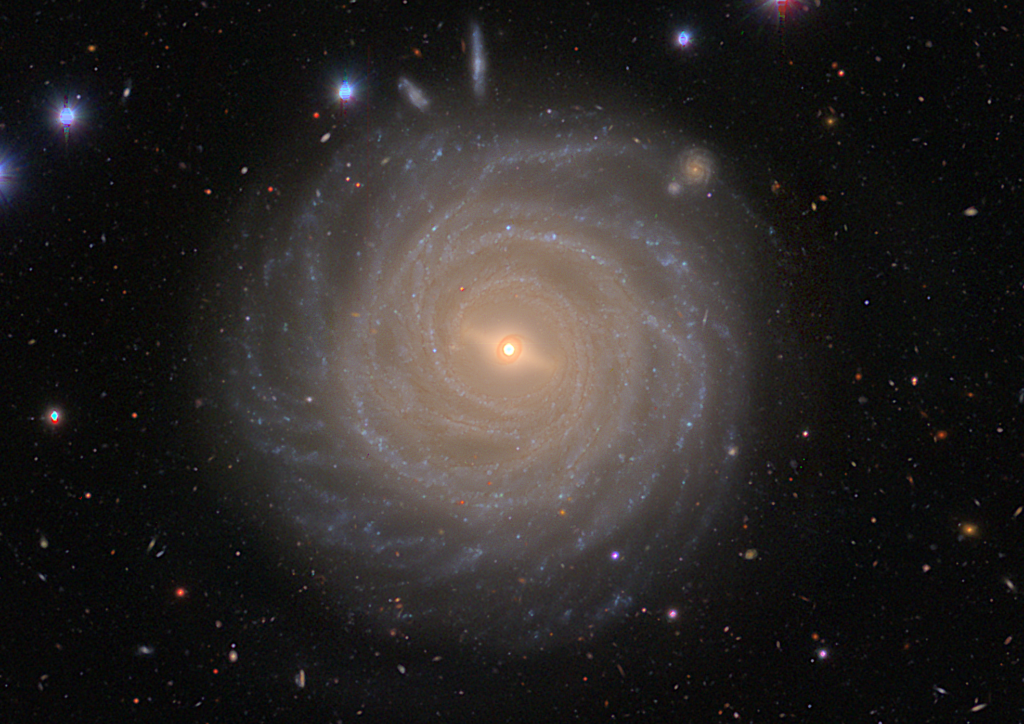Installed on top of the Hawaiian volcano Mauna Kea, Subaru telescope pleased all fans of astronomy with a new, beautiful image. It shows the galaxy NGC 521.

NGC 521 is located 224 million light-years away from Earth toward the constellation Cetus. It was discovered in 1785 by astronomer William Herschel. He described it as a dim, irregularly round-shaped nebula that was brighter in the center. At that time, astronomers didn’t know that such objects represented other galaxies.
Due to the fact that NGC 521 is turned to us with its “face,” we can see its structure in great detail. Like our Milky Way, it is a spiral galaxy with a bar — a bright structure of gas and stars crossing the center, from which the arms “grow”.
In the Subaru image also clearly visible balge NGC 521 and dark bands in the spiral arms. The latter correspond to clouds of interstellar dust. The color contrast is obvious: the balge and the bar have a reddish hue, while the spiral arms with younger stars have a bluish hue. Most likely, if we photographed our Milky Way from the same angle, the resulting image would be very similar to NGC 521.
During the observation period, astronomers have recorded the appearance of three supernovae in NGC 521 — in 1966, 1982 and 2006. However, it should be understood that they actually exploded many millions of years ago. The light from their flare has only just reached us now. In turn, since NGC 521 is 224 million light-years away from Earth, and if there are intelligent observers in that galaxy, they see our Milky Way as it was during the Triassic Period: the era when the first dinosaurs appeared on our planet.
Earlier we told you about how the Subaru telescope photographed two jellyfish galaxies.
According to subarutelescope.org


